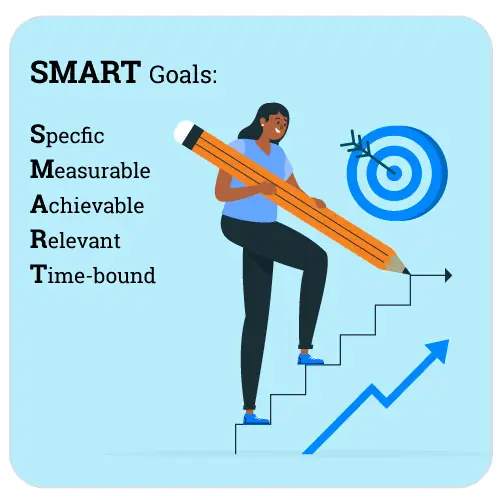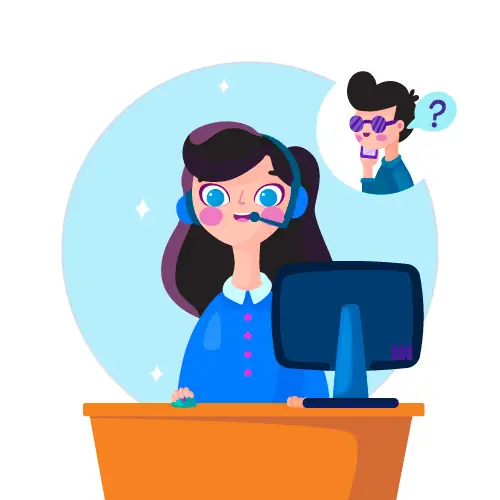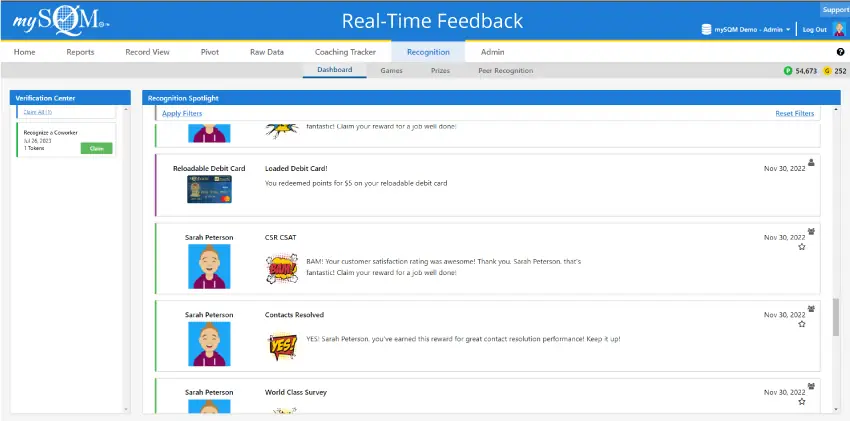Coaching isn't just about identifying areas for improvement; it's about cultivating a culture of continuous learning and development. To stay ahead, managers and supervisors need to employ strategies that motivate agents and equip them with the necessary skills to excel in their roles.
From leveraging constructive feedback, goal setting, and agent self-coaching to gamification and role-playing, this blog outlines key strategies to transform your call center coaching sessions, resulting in improved employee performance and customer satisfaction.
Call center coaching sessions are pivotal for maintaining high-quality customer service and support. These sessions serve as a tool for improving agent skills, knowledge, and overall performance. By investing in thorough and consistent coaching, call centers can significantly improve their operational effectiveness, ultimately increasing customer satisfaction (Csat).
The direct impact of coaching on agent performance is evident in various aspects of their work. Firstly, it improves communication skills, enabling agents to handle calls more effectively and empathetically. This is crucial in resolving customer issues and elevating the customer experience.
Furthermore, coaching sessions help agents better manage their time and workload, resulting in higher resolution rates and Csat scores. Equipped with targeted feedback and a clear understanding of their improvement areas, agents are more likely to excel in their roles, contributing positively to the overall success of the call center.
1. Agent Self-Coaching
mySQM™ QA - AI-Generated Agent Self-Coaching leverages AI-generated personalized coaching suggestions and customer experience (CX) best practices to assist agents in enhancing their Csat and QA performance.
Agents frequently use self-coaching to elevate their QA and Csat scores. While historically, call center supervisors have provided coaching to aid in improving these scores; agent self-coaching serves as a supplement rather than a replacement. This enables supervisors to be more efficient in their coaching time.
mySQM™ QA employs conversational IVR/IVA surveys and call recordings to transform qualitative customer feedback into actionable coaching insights. Effective agent coaching necessitates understanding why customers are satisfied or dissatisfied and why their queries may remain unresolved, thereby facilitating CX improvement.


2. Set Clear Expectations
One of the foundational steps in facilitating effective coaching sessions for call center agents is setting clear expectations. This involves defining goals and objectives aligning with both the organization's customer service standards and the agent's personal growth.
To set clear and realistic goals, employ the SMART strategy – Specific, Measurable, Achievable, Relevant, and Time-bound.

Specific: The goal should be well-defined and clear.
Measurable: The progress of achieving the goal should be quantifiable.
Achievable: The goal should be realistic and attainable.
Relevant: The goal should align with the overall call center objectives.
Time-bound: The goal should have a specific timeline for completion.
For example, a goal could be to increase customer satisfaction ratings by 15% within the next six months. This goal follows the SMART protocol because:
It is specific: The goal is well-defined, focusing on increasing customer satisfaction specifically within the next six months.
It is measurable: The progress is quantifiable by aiming for a 15% increase in customer satisfaction ratings.
It is achievable: This goal is realistic and attainable within a six-month timeframe, as it targets a specific aspect of customer service that can be optimized.
It is relevant: Improving customer satisfaction ratings aligns with the call center's objective of providing friendly and efficient service.
It is time-bound: The goal has a specific timeline of six months, providing a clear deadline for achieving the 15% increase in customer satisfaction ratings.
Coaching sessions can have a directed focus by setting clear expectations and defining goals and objectives. This not only enhances the session's effectiveness but also motivates agents by providing them with a clear understanding of what is expected of them and how they can achieve these expectations. This foundational step lays the groundwork for a structured and impactful coaching journey.
3. Provide Constructive Feedback
A constructive feedback loop empowers agents to understand exactly where they stand regarding performance, what they are doing right, and, more importantly, what requires improvement. It's the cornerstone of effective coaching, ensuring that the communication between coach and agent is clear, actionable, and aimed at fostering growth.
Constructive feedback in coaching sessions serves multiple critical functions. Firstly, it bridges the gap between an agent's current performance and the goals they aim to achieve. Secondly, it encourages a culture of transparency and trust within the team, as agents know where they stand and feel supported in their journey towards improvement. Lastly, well-delivered feedback motivates agents to develop their skills and improve performance.
Tips for Providing Constructive Feedback:
- Be Specific and Objective: General comments like "do better" are not helpful. Instead, pinpoint exact areas for improvement, such as "improving your average handle time by being more concise in your communication."
- Focus on the Behavior, Not the Person: Critique the actions, not the individual. This helps prevent agents from taking feedback personally and keeps the focus on professional development.
- Offer Solutions and Support: Don't just point out what's wrong; provide clear, actionable steps for improvement and offer your support in implementing these changes.
- Timing is Key: Provide feedback as close to the event as possible to ensure it's relevant and impactful.
- Encourage Self-assessment: Empower agents by encouraging them to evaluate their performance. This promotes self-awareness and accountability.
- Balance Positives and Negatives: Ensure feedback sessions are balanced. Mentioning what agents are doing well will keep them motivated and make them more receptive to areas of improvement.
4. Role-Playing Scenarios
Role-playing exercises are the best way to offer a safe environment to practice real-life situations. This step bridges the gap between theoretical knowledge and practical application, which is vital for honing the skills needed to deliver exceptional customer service.
The primary advantage of role-playing is its ability to simulate customer interactions, providing agents with firsthand experience in handling various scenarios. This method encourages active participation and engagement, significantly enhancing learning retention.
Through role-playing, agents develop critical soft skills, such as empathy, patience, and problem-solving, which are difficult to teach through traditional training methods. Moreover, it boosts their confidence as they become more familiar with handling different types of customers in a controlled setting.

To maximize the effectiveness of role-playing, scenarios should be as realistic as possible, reflecting common issues and difficulties agents might face. Here are some tips for creating realistic role-playing scenarios:
- Identify frequent customer queries or complaints based on historical data. Include a mix of easy and challenging situations to prepare agents for anything they might encounter.
- Personalize scenarios to your business's products or services, ensuring agents understand specific details and processes.
- Encourage feedback from participants after each session, using it to refine and improve future role-playing exercises.
5. Gamification
Gamification harnesses the motivational elements of games to enhance learning and engagement in a professional context. It involves applying game-based elements such as points, levels, challenges, and rewards to the coaching process. This innovative approach can transform mundane training sessions into dynamic and interactive experiences, significantly impacting agent development and performance.
To effectively implement gamification, it's essential first to understand its core components. Gamification is not simply about playing games. It's about utilizing the principles that make games engaging and applying them to non-game contexts, such as call center coaching.
These principles include achieving goals, receiving immediate feedback on performance, and earning rewards for achievements. By incorporating these elements, coaching sessions can become more engaging, motivating, and, ultimately, more effective.
Ways to Integrate Gamification in Coaching Sessions
Integrating gamification into coaching sessions can be done in several effective ways:
- Points System: Assign points for completing training modules, achieving call targets, or demonstrating improvement in specific skills. Agents can compare their points with others on a leaderboard, fostering healthy competition.
- Achievement Badges: Create badges for different levels of achievement, such as customer service excellence, sales targets met, or perfect attendance. This visual representation of achievement can motivate agents to strive for more.
- Level Progression: Allow agents to "level up" by mastering specific skills or reaching performance milestones, unlocking privileges or rewards as they progress.
- Real-time Feedback: Implement systems that provide immediate feedback after calls or tasks, allowing agents to see how their performance measures against set criteria or gamification goals.
For example, mySQM™ QA Software's Real-Time Recognition program awards points based on post-call surveys and QA performance to motivate agents to deliver great CX. Award points are captured in real-time, converted to dollars, and redeemed using an SQM debit card to recognize excellent performance financially.

6. Utilize Training and Development Programs
Incorporating comprehensive training and ongoing development programs into call center coaching sessions significantly elevates the coaching process's value. These programs offer structured learning pathways for agents, ensuring their continued growth and alignment with organizational goals.
Training shouldn't be seen as a one-time event but as an integral part of an agent's ongoing development. To effectively integrate training into coaching:
- Blend Various Training Formats: Utilize a mix of e-learning, such as agent self-coaching, instructor-led training, and on-the-job training to cater to different learning styles and keep the content engaging.
- Implement Microlearning: Short, targeted training sessions can be more effective and less intrusive. They can be easily incorporated into daily routines without overwhelming the agents.
The call center industry is dynamic, with customer expectations, technology, and best practices constantly evolving. As such, agent development cannot remain stagnant. Ongoing development ensures that agents keep up with these changes and grow in their roles, increasing their value to the organization and to the customers they serve.
Moreover, a clear path for development boosts agent morale and retention. When agents see investments in their personal and professional growth, they are more likely to feel committed to their jobs and motivated to excel. This, in turn, fosters a positive workplace culture that emphasizes continuous improvement and excellence.
